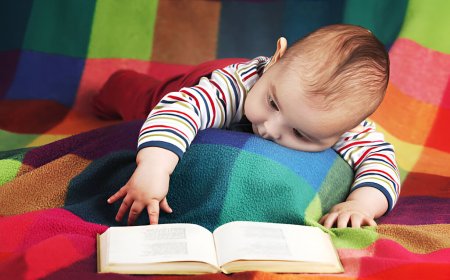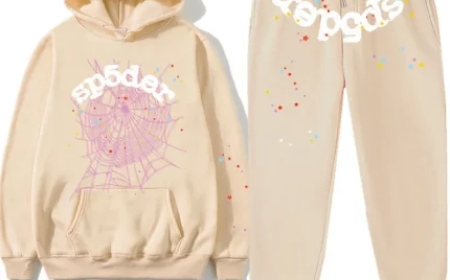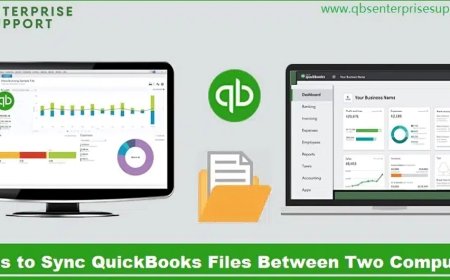6 Assignment Ideas to Boost Student Creativity
Inspire student creativity with these 6 engaging assignment ideas that spark critical thinking and fresh perspectives.

If youve ever watched students sit, blankly staring at an empty page, you know how tough it can be to break through creative blocks. We live in an age of tests, rubrics, and strict deadlines, and while those have their place, they can sometimes suffocate the spark of creativity. Thats where innovative assignments come in ones that encourage exploration, curiosity, and a willingness to take risks.
Creativity isnt just about painting or poetry; its a skill woven into problem-solving, teamwork, leadership, and even business strategy. Whether you teach history, science, literature, or a design course, you can help your students think more creatively.
Here are six engaging, classroom-tested assignment ideas to help you do exactly that.
1. Design a Real-World Solution
Nothing fires up the creative parts of the brain like tackling a real-life problem. Instead of a traditional research paper, have students identify a problem in their local community or on campus, research it thoroughly, and then design a realistic solution.
For example:
-
How could the community reduce food waste?
-
How might local transportation be made more sustainable?
-
What support could be created for first-year students to adapt to college life?
Encourage students to pitch their solution like a startup, including research, data, and even a prototype if relevant. This assignment blends creativity with analytical thinking and lets students see how their ideas could make a real impact.
Tip: Give them the freedom to present their findings in a creative way a video, a slide deck, or even a mock social media campaign.
2. What If? Historical Reimagining
If you teach history, politics, or even sociology, a What If? scenario can be an exciting prompt. Students choose a key historical moment and imagine how the world would be different if it had gone another way.
Examples might include:
-
What if the printing press had never been invented?
-
What if Marie Curie had not pursued science?
-
What if a major peace treaty had failed?
Have students write a narrative essay, a news article, or even a short documentary script from this alternate timeline. This fuels critical thinking, encourages them to examine cause-and-effect, and lets their imagination run wild while staying anchored in evidence.
3. Visual Storytelling Project
Words arent the only way to communicate an idea. Visual literacy is increasingly important in our modern world think infographics, design portfolios, even social media.
Ask your students to take a class concept and represent it visually.
For example:
-
Create a graphic novel that explains a scientific principle.
-
Design an infographic about an ethical debate.
-
Produce a video montage showing a concept in action.
Students who are more visually inclined will thrive with this style of assignment. Plus, it encourages others to expand their communication skills beyond written essays.
Youll be amazed how powerful a simple comic strip can be for showing a complex topic.
4. Collaborative Podcasts or Audio Essays
Group work doesnt have to mean boring PowerPoint slides. Why not get students to co-create a podcast? Audio essays and podcasts are fantastic formats for exploring an idea in depth.
Students could:
-
Interview experts in the field
-
Debate a controversial topic
-
Discuss research findings
-
Reflect on a cultural trend
Recording a podcast builds collaboration skills, requires strong research and organization, and pushes students to consider tone, audience, and style. They also get practice with modern tools like audio editing software, giving them transferable skills for the future.
5. Cross-Disciplinary Mashup
One of the most exciting ways to boost creativity is by breaking down walls between subjects. Ask students to create an assignment that combines two unrelated disciplines.
For example:
-
How can art principles be applied to engineering design?
-
What lessons from psychology can help build better marketing campaigns?
-
How could mathematics inspire musical composition?
Give students a chance to explore links between fields they may never have thought to connect. This type of assignment trains them to see patterns and solutions across different domains a hallmark of truly creative thinking.
If your students ever find themselves struggling to balance projects across disciplines, many find that Bachelor Assignment help resources can guide them through the planning process while still keeping their unique creative voice intact.
6. The Personal Reflection Challenge
Finally, remember that creativity is deeply personal. Often, our best ideas grow from authentic experiences. Have students craft a reflective piece about their personal growth, struggles, and aspirations but with a twist.
Instead of just a standard reflection paper, challenge them to:
-
Present their journey in the form of a letter to their future self
-
Build a creative timeline with images and personal artifacts
-
Create a short film or spoken-word piece describing their growth
This exercise gives students room for honesty and vulnerability, which often unlocks hidden creativity. When they feel safe to share their story, theyll naturally tap into more imaginative forms of expression.
Why Creative Assignments Matter
You might wonder why we should devote precious teaching time to these creative pursuits. After all, theres plenty of content to cover.
But the reality is that students who are trained to think creatively are better problem-solvers, better collaborators, and more resilient in the face of challenges. Creativity builds confidence. It helps students handle ambiguity and learn to adapt. Those are essential skills, whether someone is an artist, a software developer, or a business manager.
Assignments that challenge them to think beyond a rigid formula also make your class more enjoyable for both you and them. Youll likely find your grading pile far more interesting when students have been given the green light to be imaginative.
Tips to Incorporate These Assignments Smoothly
If youre excited to experiment but worried about practicality, here are a few pointers to make these ideas easy to implement:
? Set clear expectations. Creativity still benefits from guidelines, so share a rubric and examples.
? Celebrate risk-taking. Reward students for going outside their comfort zone, even if the final product isnt perfect.
? Offer feedback early. Check in during the process, not just at the end, so students can refine their ideas.
? Encourage diverse formats. Let students choose how they present their work text, visuals, audio, or video.
By creating a safe, encouraging environment, youll be amazed at the ideas your students produce.
Conclusion: Fueling Creative Thinkers for Tomorrow
It can be easy to stick with the same old essays and quizzes theyre familiar and predictable. But stepping outside of that box and giving students permission to play with ideas is one of the greatest gifts you can offer as an educator.
These six assignment ideas from reimagining history to designing real-world solutions will not only boost engagement but also help your students develop a creative mindset they can use long after graduation.
If they ever feel overwhelmed trying to balance these unique projects with traditional coursework, resources like Bachelor Assignment help can support them in managing priorities while still thinking outside the box.
So dont be afraid to shake things up in your next class. You might just unleash the next great innovator, scientist, or artist.
About the Author
Janie Smith is an education writer and creativity advocate with more than a decade of experience working with schools, universities, and lifelong learning programs. She is passionate about helping teachers spark student curiosity through innovative, human-centered lesson design. When shes not writing, Janie enjoys watercolor painting, exploring hiking trails, and mentoring young artists in her community.






















